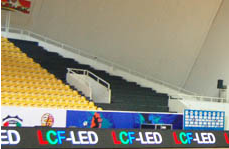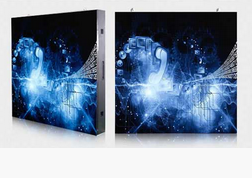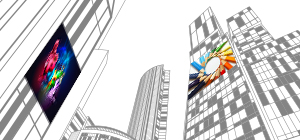Publisher: Supplier of LED Display Time: 2019-12-04 17:44 Views: 4790
In order to stand out from the competition among many peers, the adoption of more advanced digital signage has become the consensus of many owners. Because of this, LED displays are becoming increasingly popular. Its outstanding clarity, true colors and wide compatibility, as well as innovative ways to bring users an unforgettable customer experience. Of course, in order to meet the upgrading of users' business needs, LED technology also needs to constantly adapt.

Liancheng Falong Xianxi's small-pitch LED display-T series has the characteristics of ultra-light and thin, fast installation, fast maintenance, high refresh, high contrast, and wide viewing angle.
For business users, LED signs need to be able to meet their core needs, such as attracting audiences’ attention, delivering information as expected, avoiding distortion, and maximizing participation time. In these new functions, mastering the three core functions, that is, you can make obvious improvements in optimizing content, in order to achieve precision marketing and expand participation, and achieve a large return on investment.
1. Dynamic peak value: Reach the maximum content brightness: It is very important for indoor environment to be able to display eye-catching content at any time. Versatility can help the display overcome potential content distortion caused by low grayscale or unfavorable natural and ambient light operation.
Therefore, dynamic peak technology has become an important indicator of LED performance. This innovative feature can overcome this consistency barrier and amplify the brightness of the content regardless of the surrounding environment. Through this technology, the peak brightness of the LED display can reach twice the recognized peak value of the LED. Even under a white or dark background, this technology can make the LED screen generate bright and consistent content.
2. Color Management: Display accurate and true content: Modern LED displays provide a wider RGB color gamut than LCDs, which brings better picture quality performance. However, some LED products are difficult to adapt to such a wide color gamut, resulting in fuzzy or over-saturated tones. Therefore, skin tones may become reddish on this type of affected display.
To overcome these differences, any display needs to include comprehensive color management functions. Color management uses a proprietary algorithm to maintain higher accuracy even in the case of low gray levels, thereby ensuring consistent RGB grayscale and color display. Eliminating this red hue can truly reflect people's skin color, which is very important for video conferences, promotions and performances of models or actors.
In addition, the color management function is easy to customize and activate. Users can select, store and deploy colors suitable for unique brand and content requirements in the native RGB color gamut. This is conducive to the application environment of museums, corporate facilities, news studios, etc., where brands need to be quickly presented with high definition on multiple screens.
3. Scene adaptive HDR: Enhance audience participation: Any LED display must display content in a consistent manner to be effective. Unfortunately, the changes in gray level and brightness can make it very difficult to achieve.
Scene-adaptive HDR technology, which can identify and adjust differences to ensure continuous uniformity, is another feature worthy of attention. It is based on several components to ensure high universal contrast while achieving peak brightness in an audience-friendly manner.
Specifically, the proprietary anti-tone mapping algorithm can improve the contrast in each content scene to adapt to the overall size of the display and the brightness of the featured content. Similarly, modern scene-adaptive HDR technology also includes a complementary anti-glare function that allows the viewer's eyes to adjust as the screen brightness level changes. In some environments, the viewer’s eyes may be difficult to adjust because the content reaches its peak brightness. With this gap, viewers may experience discomfort and may see content added in white or gray. The anti-glare function can reduce the brightness of other areas when the peak brightness of the target area rises, thereby bringing a more comfortable look and feel, especially the comfort of long-term viewing.
Although LED sign technology is still a new attempt by some companies, potential customer engagement and sales revenue are worth considering. By understanding the above functions, users will be able to know how to use LED screens to create compelling content and obtain more business opportunities.









